
NGC 4612 is a barred lenticular galaxy located about 57 million light-years away in the constellation of Virgo. NGC 4612 was discovered by astronomer William Herschel on January 23, 1784. The galaxy is a member of the Virgo Cluster.

NGC 492, also occasionally referred to as PGC 4976 or GC 280, is a barred spiral galaxy in the constellation Pisces. It is located approximately 590 million light-years from Earth and was discovered on December 6, 1850 by Irish engineer Bindon Blood Stoney. Although John Dreyer, creator of the New General Catalogue, credits the discovery to astronomer William Parsons, 3rd Earl of Rosse, he notes that many of his claimed discoveries were made by one of his assistants. In the case of NGC 492, the discovery was made by Bindon Stoney, who discovered it along with NGC 486, NGC 490 and NGC 500 during his observation of NGC 488 using Lord Rosse's 72" telescope.

NGC 5774 is an intermediate spiral galaxy approximately 71 million light-years away from Earth in the constellation of Virgo. It was discovered by Irish engineer Bindon Stoney on April 26, 1851.

NGC 502, also occasionally referred to as PGC 5034 or UGC 922, is a lenticular galaxy in the constellation Pisces. It is located approximately 113 million light-years from the Solar System and was discovered on 25 September 1862 by German astronomer Heinrich Louis d'Arrest. When the Morphological Catalogue of Galaxies was published between 1962 and 1974, the identifications of NGC 502 and NGC 505 were reversed. In reality, NGC 502 is equal to MGC +01-04-041 and not MCG +01-04-043 as noted in the catalogue.

NGC 519, also occasionally referred to as PGC 5182, is an elliptical galaxy located approximately 242 million light-years from the Solar System in the constellation Cetus. It was discovered on 20 November 1886 by astronomer Lewis Swift.

NGC 521, also occasionally referred to as PGC 5190 or UGC 962, is a barred spiral galaxy located approximately 224 million light-years from the Solar System in the constellation Cetus. It was discovered on 8 October 1785 by astronomer William Herschel.
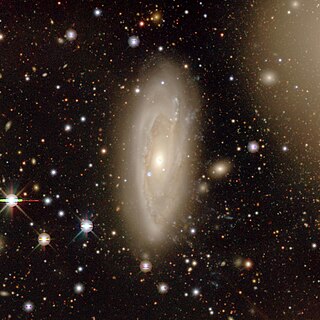
NGC 3312 is a large and highly inclined spiral galaxy located about 194 million light-years away in the constellation Hydra. The galaxy was discovered by astronomer John Herschel on March 26, 1835. It was later rediscovered by astronomer Guillaume Bigourdan on February 26, 1887. NGC 3312 was later listed and equated with IC 629 because the two objects share essentially the same celestial coordinates. NGC 3312 is the largest spiral galaxy in the Hydra Cluster and is also classified as a LINER galaxy.

NGC 1264 is a low-surface-brightness barred spiral galaxy located about 145 million light-years away in the constellation Perseus. The galaxy was discovered by astronomer Guillaume Bigourdan on October 19, 1884. NGC 1264 is a member of the Perseus Cluster.
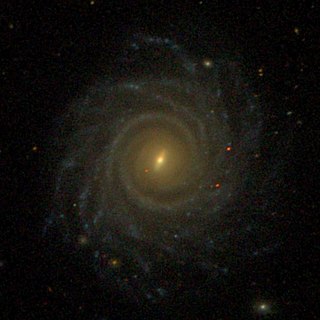
NGC 3883 is a large low surface brightness spiral galaxy located about 330 million light-years away in the constellation Leo. NGC 3883 has a prominent bulge but does not host an AGN. The galaxy also has flocculent spiral arms in its disk. It was discovered by astronomer William Herschel on April 13, 1785 and is a member of the Leo Cluster.

NGC 538 is a barred spiral galaxy in the constellation of Cetus. It is located about 250 million light-years from the Milky Way with a diameter of approximately 95,000 ly. NGC 538 was discovered by the American astronomer Lewis Swift in 1886.
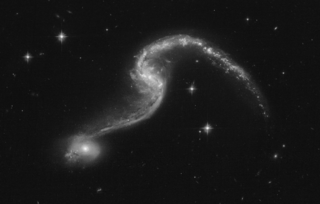
NGC 646 is a large barred spiral galaxy located in the constellation Hydrus. Its speed relative to the cosmic microwave background is 8,145 ± 19 km/s, which corresponds to a Hubble distance of 120.1 ± 8.4 Mpc. NGC 646 was discovered by British astronomer John Herschel in 1834. It forms an interacting galaxy pair.
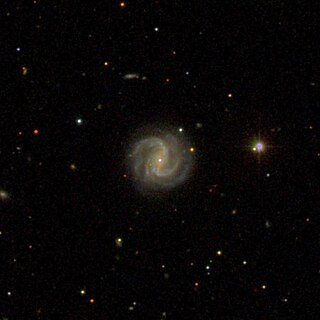
NGC 5940 is a barred spiral galaxy located in the Serpens constellation. The galaxy was found on April 19, 1887, by Lewis Swift, an American astronomer. NGC 5940 is located 500 million light-years away from the Milky Way and it is approximately 140,000 light-years across in diameter.
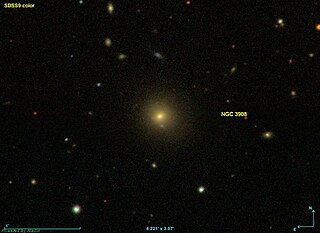
NGC 3908 is one of the furthest NGC objects. It is an elliptical galaxy located 1.2 billion light-years away in the Leo constellation with an estimated 280,000 thousand light-years across in diameter. It was discovered on April 10, 1885, by Lewis Swift, who found the object too faint for the naked eye to see. The identification of the celestial object observed by Swift is uncertain. The coordinates place it approximately 7.5 arcminutes south-southwest of a galaxy previously listed, potentially identifying it as PGC 36967. However, astronomers Corwin and Gottlieb argue that the object is much fainter than Swift's descriptions suggest, indicating it may have been too faint for him to observe. Although the right ascension aligns with another of Swift's discoveries on the same night, the discrepancy in declination is notably larger. It remains unclear if PGC 36967 is NGC 3908, and it is equally probable that Swift's observed object is "lost," with any nearby galaxy merely coincidental to Swift's original position. Due to its relatively large size, NGC 3908 is considered a brightest cluster galaxy, a BCG.

NGC 2485 is a spiral galaxy located in the constellation of Canis Minor. It is located 233 million light-years away from Earth and has an estimated diameter of 110,000 thousand light-years. NGC 2485 was discovered on March 25, 1864, by Albert Marth and has an approximate surface magnitude of 13.08.

NGC 2494 is a lenticular galaxy located in the Monoceros constellation. It is 183 million light-years away and about 58,000 light-years in diameter.

NGC 5008 is a massive barred spiral galaxy located in the Boötes constellation.
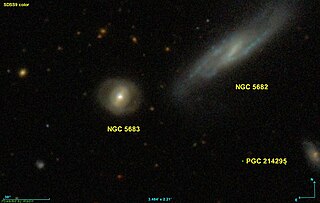
NGC 5683 is a type S0-a lenticular galaxy with a bar located in the Boötes constellation. It is 513 million light-years away from the Solar System and has an approximate diameter of 256,000 light-years meaning it is larger compared to the Milky Way. NGC 5683 was discovered by George Johnstone Stoney on April 13, 1850.
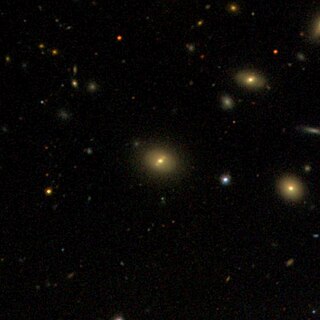
IC 4026 is a type S0 lenticular galaxy with a bar located in Coma Berenices. It is located 315 million light-years away from the Solar System and has an approximate diameter of 70,000 light-years which is less the size of the Milky Way. IC 4026 was discovered on May 11, 1896, by astronomer Hermann Kobold and is a member of the Coma Cluster. It has a surface brightness of 11.99 mag/arcsecs meaning it is a high surface brightness galaxy.

NGC 3750 is a lenticular galaxy with a bar located in the constellation of Leo. It is located 450 million light-years from the Solar System and was discovered by Ralph Copeland on February 9, 1874.
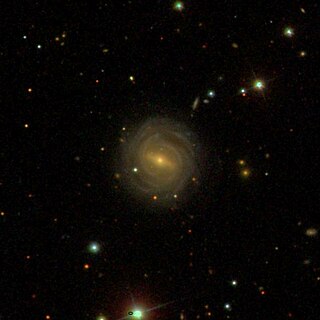
NGC 7222 is a large barred spiral galaxy with a ring structure, located in the constellation Aquarius. It is located 570 million light-years away from the Solar System and was discovered by German astronomer, Albert Marth on August 11, 1864.




















